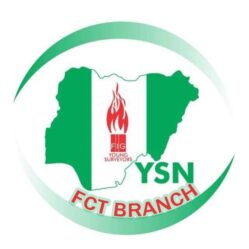A drainage network refers to a system of interconnected channels, pipes, or natural watercourses designed to manage the flow of water, both surface water and groundwater, within a particular area.
The primary purpose of a drainage network is to control and direct water runoff to prevent flooding, erosion, and waterlogging, especially during periods of heavy rainfall or snowmelt.
Drainage networks can be found in urban, suburban, and rural areas, and they play a crucial role in managing water resources and maintaining environmental sustainability.
There are two main types of drainage networks:
i. Natural drainage systems
ii. Artificial drainage systems.
Natural Drainage Systems are:-
Rivers, Streams and
Watersheds.
Artificial Drainage Systems are:-
Surface Drainage Systems, Subsurface Drainage and Storm Management Systems.
Surface Drainage Man-made channels, ditches, and canals are designed to direct surface water away from developed areas and prevent flooding.
Subsurface Drainage Underground pipes or tiles are installed to drain excess water from the soil, especially in agricultural areas. This helps prevent waterlogging and provides better conditions for crops.
_Stormwater Management Systems
In urban areas, stormwater drainage systems are developed to handle rainwater runoff from impervious surfaces like roads and buildings. These systems may include stormwater drains, catch basins, and retention basins.
Drainage networks in Nigeria, like in many other regions, play a crucial role in managing water flow and preventing flooding.
Here are some aspects of drainage networks in Nigeria:
1️⃣ Natural Drainage Patterns:
Nigeria has diverse topography, and natural drainage patterns are influenced by factors such as relief, soil types, and vegetation. Rivers, streams, and natural depressions contribute to the overall drainage system.
2️⃣ Urban Drainage Challenges:
Urban areas in Nigeria often face drainage challenges due to rapid urbanization, poor planning, and inadequate infrastructure. Unplanned settlements, improper waste disposal, and the encroachment of water bodies contribute to urban drainage problems.
3️⃣ Flooding Issues:
Nigeria experiences seasonal flooding, especially during the rainy season. Inadequate drainage systems can exacerbate flooding, impacting both urban and rural areas. Effective drainage is essential to mitigate the impact of heavy rainfall.
4️⃣ Infrastructure Development:
There have been efforts to improve drainage infrastructure in urban centers. Constructing well-designed drainage channels, culverts, and storm water management systems is essential to prevent waterlogging and reduce the risk of flooding.
5️⃣ Erosion Control:
Soil erosion is a concern in various parts of Nigeria. Proper drainage planning can help control erosion by directing water flow and preventing soil degradation. Vegetative cover and check dams are also employed for erosion control.
6️⃣ Culverts and Bridges:
Culverts and bridges are essential components of drainage infrastructure, allowing water to flow under roads and preventing road damage during heavy rainfall. Proper maintenance of these structures is crucial for overall drainage functionality.
7️⃣ Dredging of Water Bodies:
Dredging of rivers and water bodies is undertaken to improve water flow and reduce the risk of flooding. However, sustainable dredging practices need to be implemented to avoid negative environmental impacts.
8️⃣ Climate Change Impact:
Climate change can influence rainfall patterns and intensify the need for effective drainage systems. Adapting drainage infrastructure to changing climatic conditions is vital for long-term resilience.
9️⃣ Community Awareness and Participation:
Community involvement in drainage maintenance and awareness programs is essential. Educating the public about proper waste disposal, avoiding building in flood-prone areas, and participating in local drainage initiatives can contribute to effective drainage management.
1️⃣0️⃣ Government Initiatives:
Government agencies are involved in planning, constructing, and maintaining drainage networks. Policies and regulations related to land use planning, construction standards, and environmental protection also influence the effectiveness of drainage systems.
1️⃣1️⃣ Provision of Efficient Runoff Conveyance Systems:
Surveyors and Geodesists who are the core experts in Topography data generation and management are more suited to lead in the contributions that will provide more efficient runoff conveyance systems. By so doing, the transformation of the Topographical data structure from the spot height structure to the cell height structure in the Digital Elevation Model (DEM) would make diverse forms of terrain analyses possible in GIS which will impact productively improving Drainage Networks in Nigeria.


